Mento's Month: March
By Mento 0 Comments
Welcome to a new blog feature! Mento's Month is going to replace my weekly "Saturday Summaries", and instead of summarizing a week of blogging they will summarize all my activities for the entire month. This was prompted by several factors: the ongoing compacting process of Saturday Summaries, which had grown far too verbose and frequently ate up too much of my weekend; and the new release schedule of ZombiePie's Community Spotlight, which will soon be publishing in a late Friday slot - the Summaries were meant to be a way I could toss one link on there instead of two or three or four, so their role has now been rendered moot.
Instead, I'm going to make one enormous text dump of a blog every month, collating all the Indie Game of the Week episodes and whatever I've been using the Tuesday slot to blog about along with the usual game and TV and movie reviews whenever applicable. This will free (most of) my weekends for other site-related projects, like putting together a new Google Spreadsheet that tracks Dan Ryckert's progress in "Doi Another Froiday" and turning the Ranking of Fighters "SNES Fighter Checklist" into an actual list.
Indie Games of the Month
March comprised the 110-113 entries of Indie Game of the Week, outlined below:
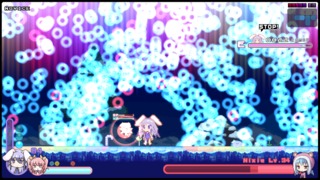
Rabi-Ribi (IGotW 110) is a Japanese doujin (their version of Indie, usually stuff like Touhou and visual novels built to appeal to a niche market of otaku) spacewhipper with a cutesy aesthetic and all-female cast of humans, witches, anthros, succubi and others. It's an enormous game with a huge number of active and passive upgrades to find and lands to explore. The boss fights all have a specific danmaku or "bullet hell" approach where the intent is to memorize enemy bullet patterns for each of their "waves" while concentrating your own ranged fire on them, and then slip in a few damaging hammer melee combos in the relatively quiet periods in-between. While the game resembles a Senran Kagura-style "galge" in terms of thirst levels, the anime cheesecake factor rarely rises above a PG-13 lasciviousness so it's not all that distracting or embarrassing (in the "how do I explain this to someone who just walked past?" sense).
Into the Breach (IGotW 111) was one of the most highly-rated Indies of last year (2018) so I felt compelled to check it out even if I quickly dropped off the developers' previous game FTL: Faster Than Light and was never that attracted to Into the Breach's "rogue-lite" structure of repeating time loops. There's definitely a lot to commend: I love the game's compact isometric diorama look, the clever way it proc-gens each mission in such a way that they can be perfectly cleared but not without a whole lot of precognitive consideration from the player, and while it is a run-based game there's plenty of different variations between the player's mech loadout or the challenges each of the game's individual islands presents, as well as a difficulty curve, so it could theoretically last you a long time if you were determined to see everything. It wasn't my type of game at the end of the day, as predicted, but at least I walked away with a keen appreciation of what they were doing.

Odallus: The Dark Call (IGotW 112) is a NES throwback from the same Brazilian team behind the similarly retro Oniken. Odallus draws from titles like Ghouls N' Ghosts and Castlevania, building a macabre world of grisly otherworldly monsters and a bold warrior passing through a world fallen into madness with a grim determination and a sharp sword. While stage-based, the game is built in the spacewhipper style where backtracking with new equipment and abilities is highly recommended: the boss fights are no joke, so coming back with more health upgrades and perhaps better armor is not a plan of action. At the same time, it's simple enough to simply power through the game with your default gear, revelling in the increased challenge instead. Like Shovel Knight, the archaic 8-bit aesthetic belies a substantial degree of smart modern design that's worth digging into.
Simulacra (IGotW 113) is a horror-themed adventure game told entirely through the lens of a smartphone device. The device in question belongs to Anna, a young woman who has mysteriously vanished, leaving her friends and contacts in a worried state. For whatever reason, this device was left on your doorstop, prompting you to figure out where she went and how you might track her down. The game balances itself between investigative work - delving through Anna's social media, web history, chat logs, and video and sound files - and correspondence with the people in her life, including her rude ex-boyfriend Greg, the potential hook-up Taylor that Anna was interacting with on the game's Tinder variant, and Anna's best friend Ashley. The game betrays its own subtly built level of tension with needless jumpscares, and the script could've used a few more passes with the spellcheck and proofreads, but I found it was a fairly novel take on a supernatural mystery adventure game.
Hey Everybody, It's the Tuesday Slot
The Tuesday Slot is a forever revolving selection of blog features, sometimes in the form of a short series or one-offs:
Tuesday the 5th - Mega Archive: Part IX: From MegaMind to Sonic the Hedgehog
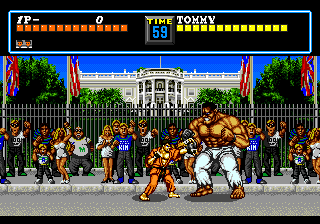
The final (for now) entry for the Mega Archive feature - which logs every Sega Mega Drive/Genesis release chronologically with various stats and impressions as I continue to research them for the sake of the Giant Bomb Wiki - covered all the way up to around the middle of 1991, and in particular the June 23rd release of the system's "killer app" Sonic the Hedgehog. Sega's big mascot platformer represented a monumental shift for the hardware developer, giving them their first bona-fide hit that wasn't originally from the arcades. Sonic also took advantage of the system's processing speed, using that in their combative advertising over rivals Nintendo even as Nintendo was primed to introduce the world to the SNES (which had already been available in Japan as the Super Famicom for several months by the start of 1991). Mega Archive Part IX wasn't just focused on Sonic, however: it also included cartoonish stealth game Bonanza Bros., the first of EA's PGA Tour Golf sims, the infamously localized "all your base" shoot 'em up Zero Wing, ports of PC darlings King's Bounty and Star Control, and many more.
(Tuesday the 13th was skipped.)
Tuesday the 18th - Seeking Warframe & Fortune (Part 1)
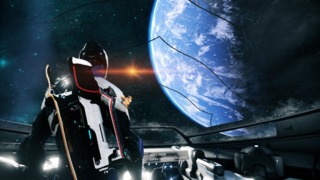
The 18th saw the introduction of a new feature, prompted after watching a few streamers in my orbit getting heavily into Warframe, which has (as of writing) just celebrated its sixth year of frequent iterative content additions. The goal of the feature was to see how far I could get and how hard the going would be for someone playing solo with zero intent to spend any money. Granted, it's not the most generous approach to the game, and I can't imagine it's the type of feature the developers would appreciate seeing, but I've always been the type of "Scrooge gamer" who likes to experience games with as little spending and social interaction as possible. Plus, I can't imagine how many others would be playing the game the same way, or at least writing up their experiences of same, so it felt like an angle that might prove of interest or value to somebody out there having a similar "I should really try out this Warframe game everyone is talking about" response to the zeitgeist around this title.
Part 1 of Seeking Warframe & Fortune is spent on the early game: getting to grips with the mechanics and features, exploring Earth via its many mission nodes, and completing the game's first quest line, "Vor's Prize", and understanding the first of the game's big enemy factions, the Grineer.
Tuesday the 25th - Seeking Warframe & Fortune (Part 2)
Part 2 of Seeking Warframe & Fortune adopted a looser format of "new developments" which highlighted a number of topics of note from where I was at in the game. This update focuses on Cetus and the Plains of Eidolon, one of Warframe's many large persistent maps that has plenty to do and find and complete, as well as the rest of Earth's nodes and the first few explorations of the nearby planet of Venus, which is owned by the game's second big enemy faction: the Corpus. I also checked out an ongoing event, the construction and foundry processes behind creating new gear and warframes, the game-wide "mastery ranks", and more.
Sunday the 31st - Bucketlog March: Okage: Shadow King
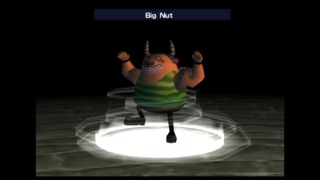
Traditionally, a Sunday is not a Tuesday, but I ran out of time in the month to get the Bucketlog entry out in time. The Bucketlog is a monthly feature wherein I finally check out a game in my collection that's been left unplayed for longer than I can remember, building around the idea that there are certain backlog items I want to complete before the heat death of the universe (or my own demise, which will likely be earlier). For some reason, all twelve games scheduled for the Bucketlog come from different systems. March showcased the PlayStation 2's representative.
Okage: Shadow King was a trip. I have a lot of affection for the PS2, and I recognize that while I played in excess of 200 games for that system, it was only the tip of the iceberg. I thus have a wishlist of North America/Japan-only games for that system that's a mile long, though as we move further away from its era it seems less likely I'll get around to many of them. Okage was one of the few on that list that Europeans were lucky enough to finally have access to via the "PlayStation 2 on PlayStation 4" range of digital releases.
Playing the game, two things became quickly evident: the first is that the game was pretty archaic, and may have even felt that way at the time. An early PS2 release, it was one of a handful to be released on those blue-bottomed PS2 CD-ROMs that were common in the system's salad days. The RPG mechanics were a semi-traditional mix of elements taken from Suikoden, Final Fantasy, Grandia, and Dragon Quest. Encounters were visible on the overworld, so you could take steps to avoid them if you so wished, and dungeons had this odd progression system where you had to defeat a few stationary targets to open the way to the next floor.
The second thing that was fairly apparent is that I would've loved this game playing it for the first time in 2001, rather than 2019. It has a distinct visual style that resembles the bizarre characters seen in the worlds of stop-motion movie creators Henry Selick or Laika, and it couples this with an irreverent humor and a subversive story that deconstructs the tropes and conventions of JRPGs. In 2001, I would've been far enough long in my JRPG addiction that I'd fully understand and embrace the broader frame of reference and meta platform the game was using, but not so far along that the game would feel as antiquated and rudimentary as it does now.
If you've slept on Okage: Shadow King so far and don't mind a bit of jank (the game has a real depth-of-field issue, for whatever reason) and old-fashioned RPG combat, it's worth giving it a shot for its uniquely surreal charms and goofy humor.
The Games of March
Nioh (2017, Team Ninja)
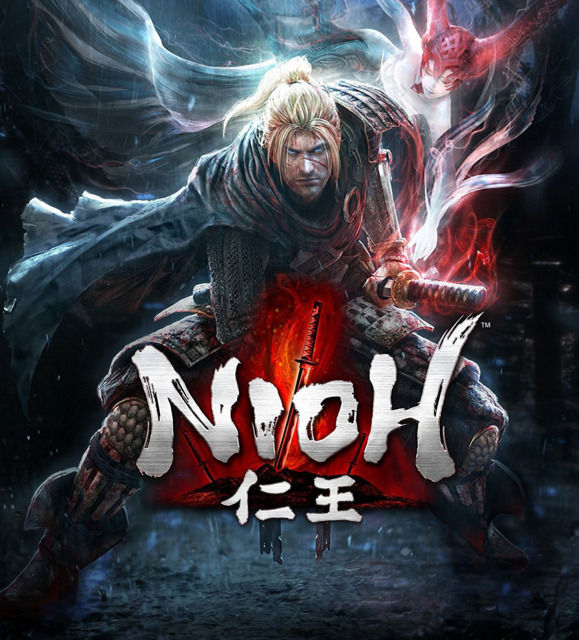
The entirety of March's gaming time not spent on any of the games featured above was dedicated to Team Ninja/Koei Tecmo's "Souls-like" Nioh. Despite the evident stylistic and gameplay similarities to FromSoftware's notoriously challenging RPGs, Nioh makes a lot of bold strides to set itself apart. Chief of which is the game's unusual mission-based structure, which often sees you re-entering completed levels with different enemy and item arrangements for its many side-quests, and a focus on loot RPG mechanics like color-coded rarity and extensive crafting and upgrading systems.
You'd think a loot RPG version of Souls would be less complex, but the reverse is actually true. Nioh has in-depth skill trees for its five weapon types - sword, axe/hammer, spear, twin blades, and kusarigama (a sickle and weight connected by a chain) - as well as ninjutsu (used to make consumables like shuriken and smoke bombs) and onmyo magic (fireballs, lightning bolts, etc. along with a lot of buffs and debuffs). Each tree has a selection of moves you can unlock and then upgrade, each of which can be binded to a limited number of controller functions (like pressing the heavy attack button while guarding). In addition to that customization, there's also the game's stance system: low, mid, and heavy, each of which produces different attack patterns for each of the five weapon types. Think of it like Bloodborne's trick weapon system: high stance is closer to when the trick weapon is in its slow but damaging "heavy" mode, while low stance is more like when the trick weapon is in its lighter form and better suited for hit-and-run tactics on faster enemies. The player also has bows and rifles for ranged attacks, allowing them to pop off heads at a distance albeit with a limited stock of ammo.
The complexities and long learning/difficulty curve of the game made for a challenging but satisfying playthrough, especially getting over early humps like the onryoki and hino-enma boss fights. The mid game drags a little however, as by this time you'll have a handle on the game's mechanics and the challenge level appears to dip slightly. This changes towards the end as suddenly every major story map has a recommended level far in excess of your own, as the price to level up continues to grow steeper. The game never pulls its punches in the end-game either, tossing side-quests at you where you fight two bosses simultaneously (which is even harder than it sounds) or take on waves of tough yokai monsters with a dwindling supply of resources. The game's final boss, not to give too much away, includes three challenging fights in a row (though fortunately once you've beaten one of those three, you don't have to fight it again).
Not for the faint of heart, then, as is perhaps typical of Team Ninja and their storied background as the developers of the demanding NInja Gaiden reboots. It's worth the struggle however, because I found all the changes that Nioh made only serve to improve the overall experience, the very few letdowns including the generic samurai story and a certain degree of the game's content outpacing the amount of novel elements it had to showcase: an example of this is the limited amount of yokai you'll face across the game's many levels. Once you've met the first onyudo (an enormous, ripped, long-tongued monk with some tricky attack patterns) in one of the early side-missions, you've probably met around 80% of the game's non-boss yokai by that point. Overall, though, it comes highly recommended by this From diehard and I look forward to discovering Nioh 2 in a few months (I hope).
Other Distractions
(Here is where I'll write about all the TV and movies I caught during the month. These entries for season 2 of Mob Psycho 100 and Captain Marvel were taken from their original Saturday Summaries entries.)
Mob Psycho 100 (Season 2)
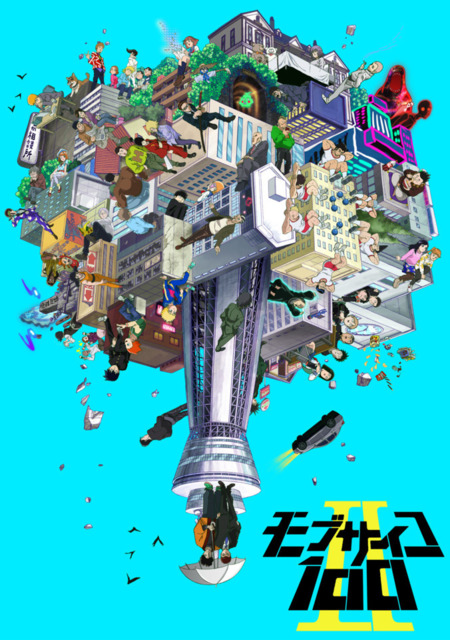
I was going to wait until the season had ended before jumping in, but I heard the current season of Mob Psycho 100was wrapping up next week and figured I could stretch my viewing of it enough that its final episode would land before I was done. Instead, I binged the entire thing in two days because I loved it so much. I saw the first season early last year as part of my push to watch more TV, anime, and movies - something I've relaxed on a little in 2019, chiefly because I've already blown through most of the "to watch" list I let build up - and found it to exhibit the similar strengths of One (the mangaka)'s thematically similar One Punch Man: what seems on paper like a dull superhero parody where the overpowered hero anticlimactically wins with almost zero effort every time is actually entertaining as hell in spite of it, focusing on the comedy and drama of the people involved and the pretentious foolishness of villainy. Mob Psycho 100 S1 literally ends with one of the show's only "grown-ups" - Mob's master Arataka Reigen, a fortune-telling con-man that takes advantage of Mob's genuine psychic ability while also proving to be a reliably level-headed and empathetic mentor for same - dressing down a secret cabal of bad psychics while he was temporarily invincible, forcing them all to confront how childish they were being about taking over the world with their powers.
Mob Psycho 100 S2 spends a lot more time focusing on that side of the show's equation. Mob learned long ago not to rely on his psychic powers as his be-all and end-all solution to life's problems, and has been diligently working out as part of his school's goofy but earnestly supportive Body Improvement Club in order to win over his childhood crush the honest way: through athletic and academic prowess. With the exception of an arc involving a powerful TV psychic that turned evil and dead (in that order), coming back as a vengeful spirit like comic relief ghost Dimple but several magnitudes stronger, most of season 2 has been spent developing Mob, his relationship to his friends, his relationship to his master Reigen, his unyielding sense of morality, and his continued quiet pursuit of Tsubomi-chan: the perhaps-not-so-oblivious object of his affections. However, the show finally got serious and dramatic with its final episodes, as the rest of the aforementioned shadowy cabal stages its big assault on Japan and its government. That also means it suddenly got very cliffhanger-happy, and I'm still at least one episode away from seeing how it all pans out to my own well-deserved irritation.
Also, the new opening theme is catchy as all hell, perhaps more so than season 1's. I can never bring myself to skip it.
Captain Marvel (2019)
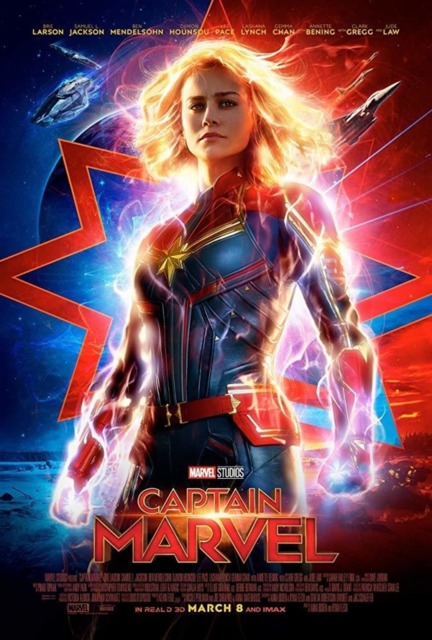
Keeping up with the Marvel Cinematic Universe is almost a full-time job these days, but with Avengers: Endgame on the horizon and a lot of buzz around the first female-led MCU movie I felt compelled to check out Captain Marvel. The short review is that I enjoyed it, but that it otherwise felt like every other MCU origin story: I'm getting a little bored of the formula of these things, where it always ends with the hero reaching deep for their true heroism and saving the day with an elaborate CGI fireworks display. Brie Larson's fine in the role - she sort of supplants the character's personality with her own outspoken attitude, but since Downey Jr. did the same thing with Tony Stark it's hardly something I could criticize given how it made Iron Man a strong enough foundation to build this entire 20+ movie enterprise upon - and I liked the supporting roles from a convincingly de-aged Samuel Jackson as a circa-1995 Nick Fury, Ben Mendelsohn's laid-back Skrull commander Talos, and Jude Law's patient mentor Yon-Rogg. I also liked how the MCU's cosmic stage is shaping up, establishing more about how the MCU's versions of the Kree and Skrull operate and lending more context to the Guardians of the Galaxy's run-ins with the former and their likely presence in the next Avengers movie, as the remaining human Avengers seek help in their final battle against Thanos.
Without hopefully sounding too dismissive of those fighting the good social justice fight, Captain Marvelfelt a little heavy-handed in that regard. Black Panther, which made a huge push for the representation of their featured race, did so via a much smarter and more natural process; it worked to sell the notion of Wakanda and its culture and customs, and how an African-American outsider like Killmonger might resent and want to manipulate his way into becoming its leader due to a perceived lack of solidarity with their suffering kin around the world. Captain Marvel very much wanted this movie to empower the audience of young women watching it in a similar manner - and I hope it does, because those shots of Larson signing autographs for little Captain Marvel cosplayers are delightful - but it could've easily done so just by existing, confident in its portrayal of Carol Danvers as an insuppressible air force vet who overcomes a lot of bullshit caused by the male egos standing in her way. That it then had to make all that super apparent for those sitting in the back row with awkward musical cues like No Doubt's "Just a Girl" over a fight scene felt like it was betraying the relatively more subtle character work seen more recently elsewhere in the franchise for the sake of its (entirely correct) message. I'll admit that some of this fatigue is due to all the right-wing/MRA nonsense surrounding the movie also, which was hardly the movie's fault and proved to be completely ineffective in curtailing its box office success (as did their campaign to force Disney to permanently separate James Gunn from his beloved Guardians of the Galaxy franchise over some old edgelord tweets; it's been a good week for laughing at the failures of shitty dudes with shitty agendas).
Danvers is still the badass female superhero lead the MCU needed, but right now it's hard to take her as seriously as the nuanced Gamora or Black Widow, both of whom are shown to have more than their fair share of flaws and hang-ups to work out in between the regular ass-beating sessions. It might simply be a matter of time; no MCU superhero was a fully fleshed-out personality until after their origin story was out of the way and they could bounce off the others in their orbit in different movies. I'm looking forward to seeing more of Captain Marvel in Endgame, and the directions Larson and her directors will take what will no doubt be one of Marvel's bigger names in their future movie plans.
Looking Ahead
April's not going to be the busiest month from what I've seen - we're already a week in with almost nothing to show for it, beyond MK11 and Satisfactory betas - but I suspect it'll still deliver something for everyone before it's over. What follows are a selection of the month's projected releases and my expectations for them:
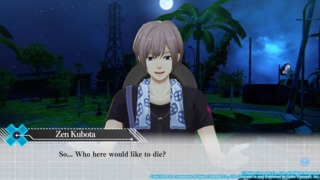
- April 9th brings us the remaining Shovel Knight free DLC, which includes a multiplayer mode (Shovel Knight Showdown) and the last of the bonus campaigns (King of Cards). I'm stoked to see what the latter is like, playing it some time later this month most likely, and I'm curious enough about the former that I hope one of the Giant Bomb teams takes a look at it.
- April 9th also has the oddball survival sim/visual novel/dungeon "blobber" Zanki Zero, which has the remaining eight humans of a post-apocalyptic Earth scrounging through ruins and fighting off feral goats for resources, cloning themselves over and over upon death. The idea of a survival sim combined with a Japanese dungeon crawler is definitely intriguing, especially as the people behind the nuts Danganronpa games are behind it, but as was the case with the thematically similar Metal Max Xeno it might be worth waiting for some reviews/coverage before dropping any money on it.
- April 12th sees the release of the Nintendo Labo VR Kit which... if I'm being honest, there are certain releases that I'm only excited about because they're likely to produce some entertaining Giant Bomb content to consume. Jeff and his sheer revulsion at the idea of bending cardboard while constructing the mech suit last year was simply one highlight in several hours of chill times with arts & crafts (over on Waypoint, we also got the cute treat of Austin's bashful confusion regarding "papa bear"). I'm also curious just how well the Switch can handle VR, given the high framerate involved, so it'll be a time of discovery for a lot of us, I suspect.
- April 16th includes a few ports of note, including the Final Fantasy X/X-2 HD Remaster coming to Switch as well as bucolic town sim My Time at Portia hitting consoles. I'm particularly interested in the latter: while I doubt my laptop will have any serious problems with it, it's the sort of relaxing game that might be better served playing on a sofa with a controller or in bed with the Switch. Shorly following those is the Cuphead Switch port on April 18th - again, this is something I've been anticipating as a way to finally play Cuphead, as I lack an Xbox One and don't trust that my PC will be able to handle that visual wizardry.
- April 23rd will be a big date for fighting fans, as Mortal Kombat 11 arrives with its time-loop shenanigans and grotesquely gratuitous fatalities. I'm not a fighter game fan myself, though I liked how prominent the story mode was in Mortal Kombat 9 and had enjoyed watching its continuation with Mortal Kombat X. Maybe I'll see if anyone I like is streaming the story mode for MK11 too. April 23rd also has the Switch port of Dragon's Dogma, the portable device making a germane home for a game where you spend many hours just walking to quest destinations, as well as Cytus Alpha, the Switch version of the popular mobile/arcade rhythm game.
- April 25th will see the debut of the new SteamWorld game: SteamWorld Quest: Hand of Gilgamech. Now, I am a little apprehensive about any card-based RPG, but Image & Form has earned enough goodwill with the likes of SteamWorld Dig 2 and SteamWorld Heist that I'm prepared to give it a shot. It's also a Switch exclusive, so that console's in for a pretty good month.
- April 26th features the last of the big Switch exclusives for this month: BoxBoy! + BoxGirl!, the cute minimalist HAL Laboratory puzzle-platformer series that had been 3DS-only until now. I've been meaning to catch up with those games - I've only played the first - but my hope is that they release the first three together in a compilation on Switch at some point. Maybe if BoxGirl does well for them? April 26th is also the debut of Days Gone, a game for which I've yet to hear any kind of hype beyond what was manufactured at the three E3s it's appeared at so far. I think its developers will just be glad to have it out of the door by this point, even if it proves to be underwhelming. Still, at least they planned ahead better than the mid-February crowding of Crackdown 3/Far Cry New Dawn/Metro Exodus, with April proving to be a slight month for other big AAA games to get in its way like a pack of (ugh) freakers.
- Finally, there's that Super Meat Boy Forever runner, also out on April 26th. I can't say I'm super stoked about it, not really enjoying any endless runner I've played previously, but it's a decent enough fit for Team Meat's diabolically difficult mascot platformer.
The April Edition of Mento's Month should arrive in the first weekend of May, probably after I get knee-deep in whatever this year's May feature will be. It'll include another four Indie Games of the Week, probably more Warframe talk, the April Bucketlog entry (no big hints, but I will say it's a 3DS game), and hopefully a few other fun features. See you then.
